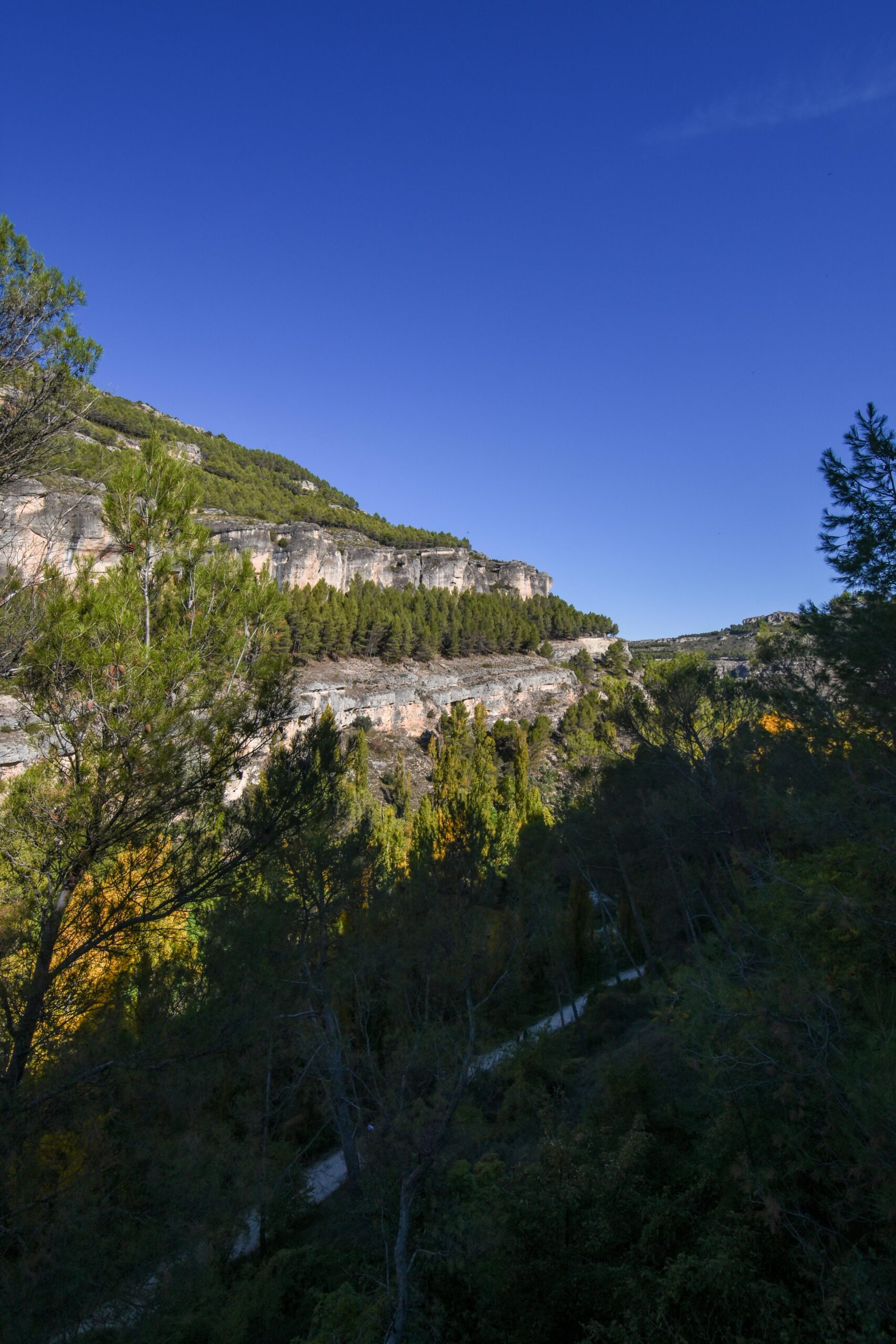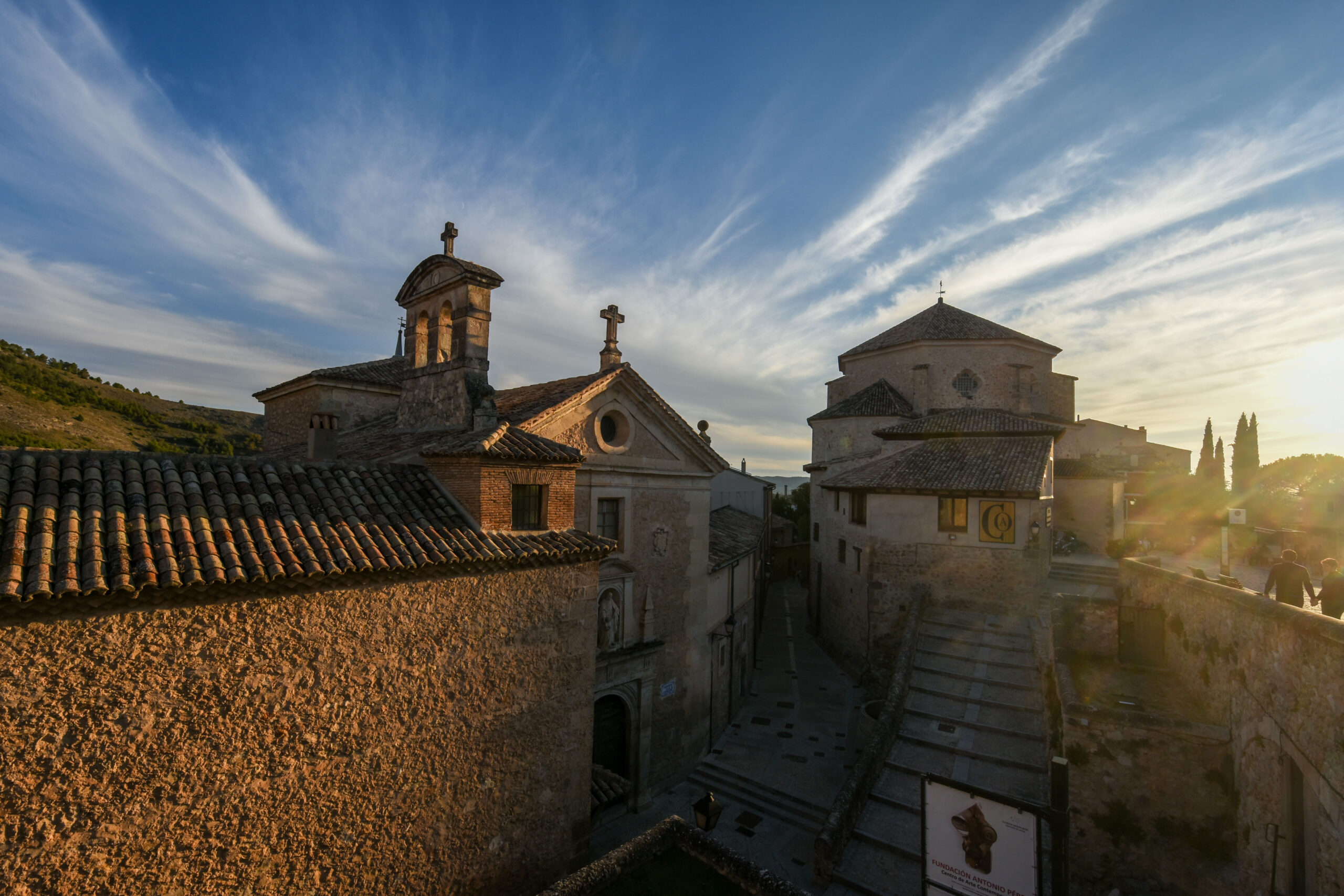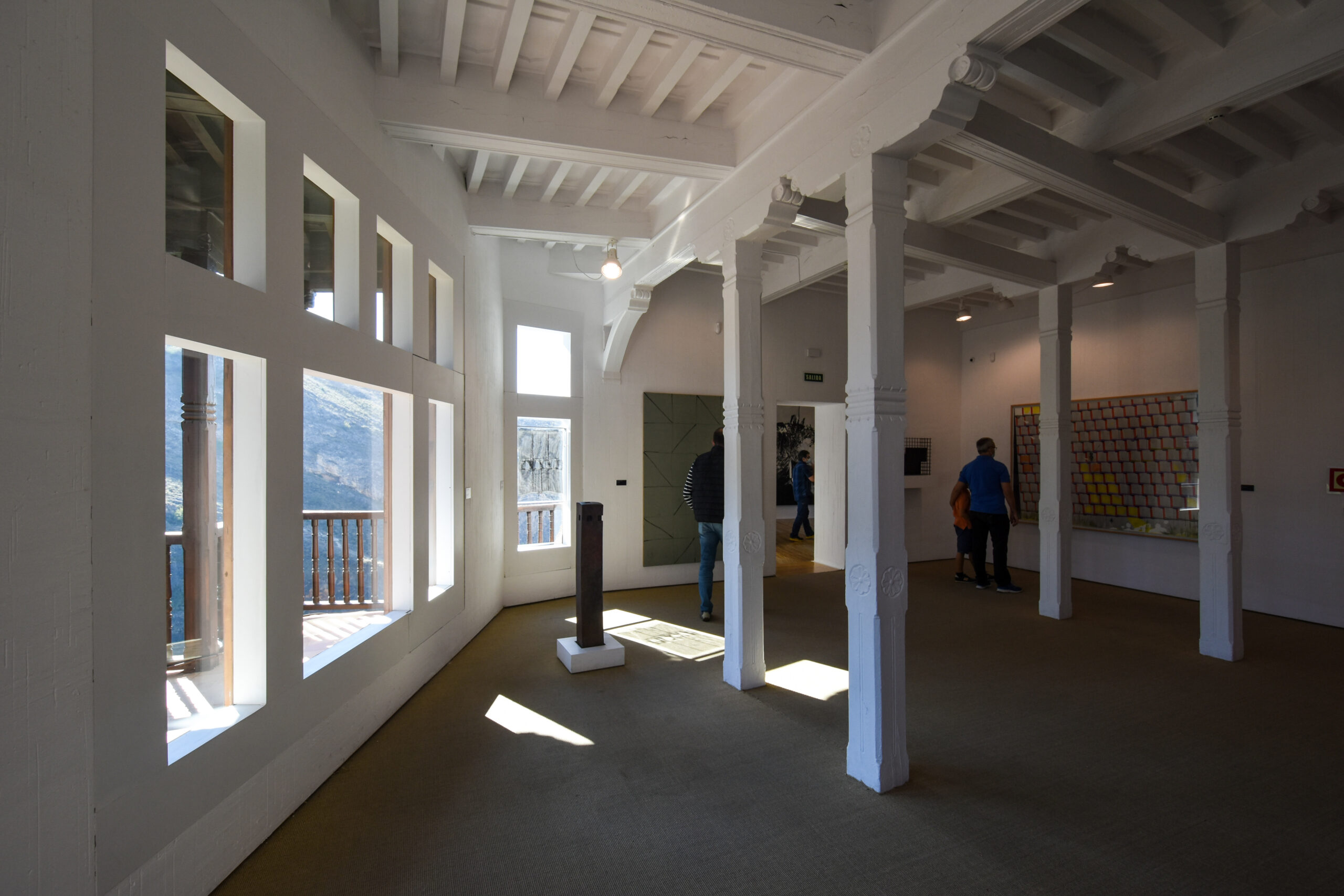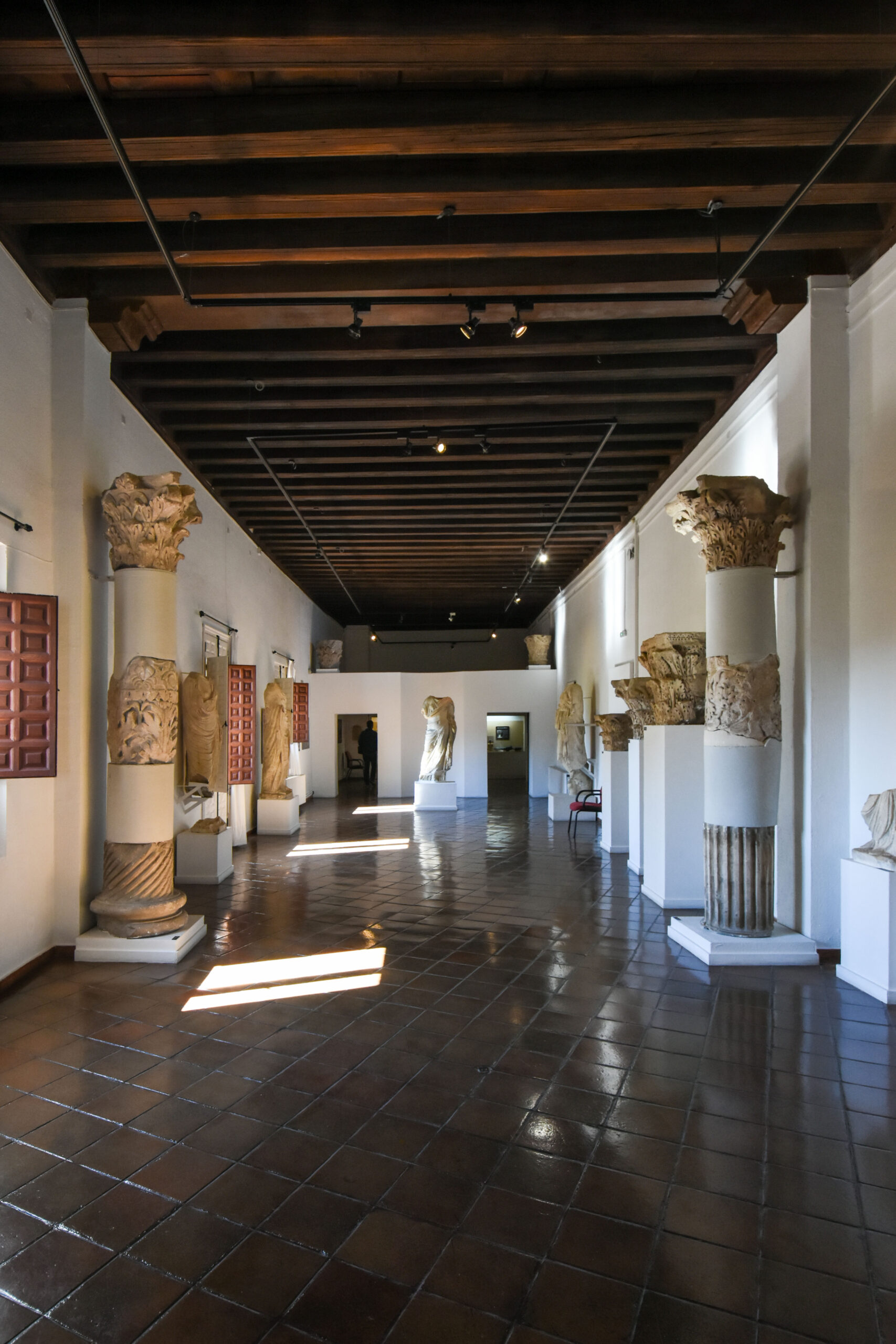Last stop of my week in Spain, Cuenca, a UNESCO World Heritage Site, the city José calls home. When José first told me about Cuenca, six years ago, still in Mexico, I imagined a small village, on top of a hill, and that was how it was, many many years ago. Today it is a huge city, a province capital, with a whole district of not very pretty residential buildings that we had to cross to get to José’s mother’s house, in the small neighborhood of San Anton. Waiting for us we had a delicious homemade potato tortilla and also Lua, Jose’s dog, which hadn’t seen him for 9 months and was super happy to have the owner at home!
The next morning we left to explore Cuenca. As soon as we crossed the bridge over the Júcar river, I asked José for a change of plans, the light was incredible and I wanted to walk along the river, to what I found out that was the “Ruta del Júcar“, with the city on the right and the incredible rock formations, which surround the old city, on the left. We went up and up and up through the Sanctuary of Our Lady of Anguish, a suitable name for what one feels whenever we want to go up to the old town, for José to tell me that we would have to go all the way down again to see the city as he wanted to show me!



Even so, it was impossible not to walk through Plaza Mayor, the heart of Cuenca, where the Cathedral is located. In fact, we would have to go all the way down because some time ago there was a landslide and the access to San Pablo Bridge is temporarily closed.
It is on the other side of this bridge that we have one of the most iconic views of the city, over the valley of the river Huécar to Casas Colgadas (Spanish for “Hanging Houses”), so-called as their beautiful wooden balconies, dating back to the 15th century, are “hanging” over the cliffs. Although a lot of houses in Cuenca seem to be “hanging houses”, just these ones, with the wooden balconies, are called Casas Colgadas… It is also on this site that you can find the Parador de Cuenca (Paradores are like luxury hotels in historical sites), in the former Convent of San Pablo and which is right in the center of the “Hoz del Huécar”, the name they give to the design the river makes, in the shape of a hook (a U-turn, basically).
So from Plaza Mayor, we descend through the Miradores de Huécar, then up the Subida a San Pablo, that we later went back down to go back up to the old town… A little bit the essence of this city, a lot of going up and down and up and down!






We went up where José had originally planned, through narrow streets, passing the San Gil viewpoint, overlooking a picturesque neighborhood and the Paleontological Museum of Cuenca, continuing along Calle Alfonso VIII, to see the beautiful painted houses, passing by Convento de la Merced and ascending to Plaza Mangana, with the Tower of the same name, and various remains of the Roman city that once existed here. Also from here, we have an incredible view of the Júcar valley, so I decided that this was where I would fly my drone later 😉







Before heading home to have a delicious Paella for lunch, we returned to the Plaza Mayor to visit the incredible Cuenca Cathedral. The ticket we bought was the one for the cathedral, including the climb to the triforium, which costs €7. The audio guide is free and highly recommended as it explains in detail each part of the cathedral. I love visiting a place without expectations, as we are easily surprised and that was precisely what happened to me in this cathedral! The light, the stained glass, the choir, the ceilings, some of the chapels, the sculpture of the Last Supper right at the entrance! I illustrate:













The cathedral also has a beautiful cloister with access to a viewpoint overlooking the Parador and the Huécar. Then, going up to the triforium, we can observe the Plaza Mayor from above, and also the cathedral’s central nave painted by the light that enters through the colorful and modern stained-glass windows.
It was time to head home for lunch and to wait that everything would open up again after the siesta break.



The long-awaited time to return to Cuenca arrived. After carrying the drone for almost a week through Spain, I was finally going to be able to fly it! Flying in Spain is much more limited than in Portugal, it is prohibited in almost all cities, in Zaragoza, in Teruel, but not in Cuenca! And what an incredible city to see from the air, with this peculiar geography of a town on the top of a hill between two deep and winding valleys.







But as much as I wanted to fly the drone from a single point when I would send it to the valley opposite to the entire city, the drone insisted on losing contact with the control and “returning home”. but good that it was like that, as José took me to the Barrio del Castillo Viewpoint, crossing the entire town, to the highest point of the city, already leaving the walls, to fly the drone on the other side. Cuenca is beautiful, especially at this hour!
After sunset, we explored the walls a little, drank a caña on a cute terrace, and returned home, where a nice meal awaited us!









Last half a day in Cuenca, that afternoon I was taking the bus to Madrid and then another one to Lisbon. I asked José to return to the Subida a San Pablo, to fly the drone from there, to catch Casas Colgadas and Huécar valley.





It was the 12th of October, the day of Our Lady of Pilar, the day of “Spanishness”, a holiday in almost all Hispanic countries. Next to the Parador, in the former convent church, we can find Espacio Torner, a small museum that showcases the incredible work of the artist Gustavo Torner. That’s when we discovered that on that day, all museums were free, so we started a saga of museum visits! We also quickly entered the Parador to visit its cloister.
The second museum of the day was the Abstract Art Museum, which is located right inside the Casas Colgadas. It is one of the most important contemporary art museums in Spain and in addition to the wonderful works of art it has, it is located inside an incredible building, with even better views! It’s just a pity that it is not allowed to go out to the balconies…







We also visited the Provincial Museum of Cuenca, very weak, with a museological design from the last century, and we tried to visit the António Pérez Foundation for Contemporary Art, but it was going to close soon for lunch / siesta, so it was no longer possible to enter.
We returned home, descending the walls through the Convent of Anguish, by the Júcar to San Antón, where we had lunch and rested for a while, before my long journey back home. So I said goodbye to Jose, after a fabulous week between Zaragoza and Cuenca!





If you liked this post and want to read more about my trips to Spain, you can visit the following posts:




